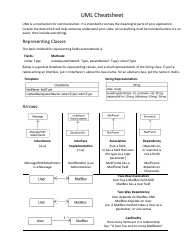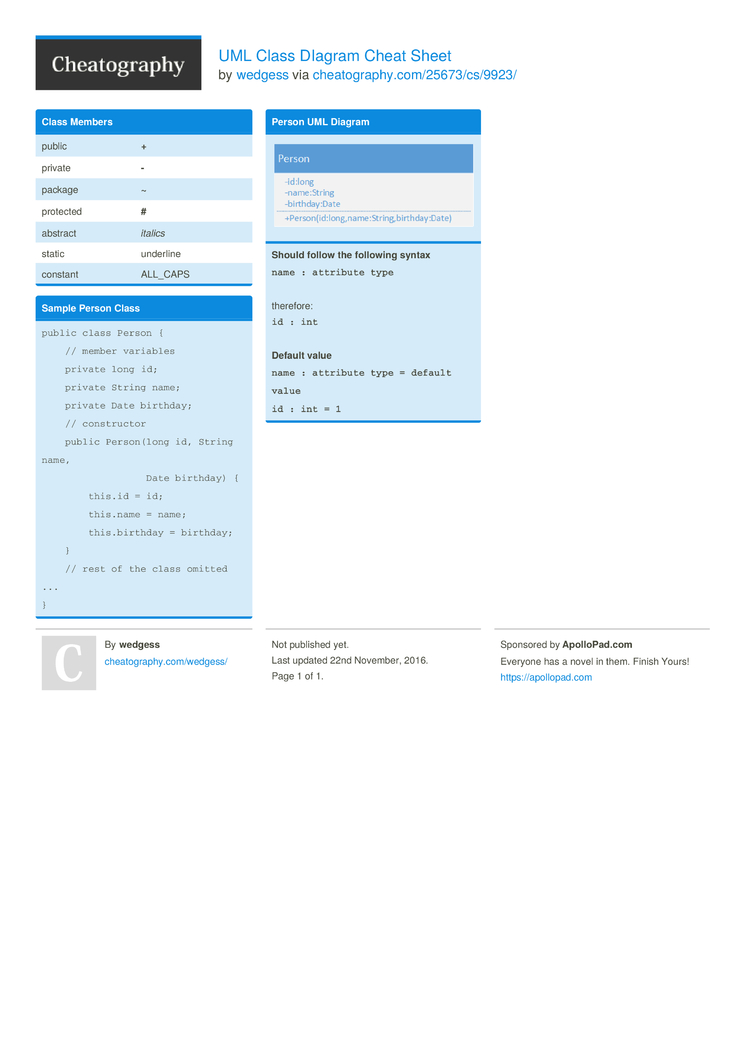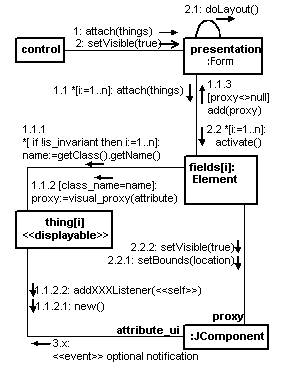Flowchart Symbols and Meaning - Provides a visual representation of basic flowchart symbols and their proposed use in professional workflow diagram, standard process flow diagram and communicating the structure of a well-developed web site, as well as their correlation in developing on-line instructional projects. See flowchart's symbols by specifics of process flow diagram symbols. UML Class DIagram Cheat Sheet by wedgess - Download free from Cheatography - Cheatography.com: Cheat Sheets For Every Occasion UML Class DIagram Cheat Sheet (DRAFT) by wedgess This is a draft cheat sheet. It is a work in progress and is not.
Every once in awhile, I have to draw a UML diagram. I rarely do serious designs with UML, however sometimes I do need to depict some piece of code in a diagram and UML seems to be the best notation around.
Unfortunately, various sources of information on UML tend to over-complicate things. I am not software architect and drawing UMLs is not my job. So my UML skills are poor by definition. Moreover, I am happy with this situation and don’t see it changing in the future (even if I get promoted ).

So from time to time I need a simple UML reference card. Simple search finds references like this one, which are excellent if you are serious about UML, and I am not.
Eventually, I decided to write a short UML class diagram reference card for myself. I hope you will enjoy it as well.
Inheritance
So, this is how classes inherit one from another. Here Child class inherits from Parent Class.
Use
This is how User class uses Resource class.
Contains and manages
Here, Whole class contains and manages Part class. This type of relation can be extended to one of the following:
- One to One
- One to Many
- Many to One
- Many to Many
References
Here, Whole class references to Part class, but does not manage it. Again, can be extended with:
- One to One
- One to Many
- Many to One
- Many to Many
This is enough information for now. I’ll probably extend it over time. In any case, please post your corrections and suggestions.
<code> blocks to be highlighted. Uml Diagrams Cheat Sheet

The Unified Modeling Language (UML) includes interaction diagrams with the purpose to illustrate how objects interact via messages. Interaction diagrams are used for dynamic object modelling. There are two common types: sequence and communication diagrams. Communication diagrams illustrate the interactions between objects in terms of sequenced messages. In this blogpost I will provide you with an overview of basic communication diagram notations and common patterns. You should this blogpost as a cheatsheet.
Content
Links
A link is a connection path between to objects—it is an instance of an association. Note that multiple messages and messages in both ways flow along the same—single—link.Messages
 Each message between objects is represented with a message expression and small arrow indicating the direction of the message. The best practise is to not number the starting message. However, even though it is legal to do, it simplifies the overall numbering if you do not do it.
Each message between objects is represented with a message expression and small arrow indicating the direction of the message. The best practise is to not number the starting message. However, even though it is legal to do, it simplifies the overall numbering if you do not do it.
Messages to itself
A message from an object to itself is illustrated by a link to itself, with messages flowing among the link.Creation of instances
The UML convention is to use a message named `create` to create an instance. It is legal to use another message name. If you do use another message name, you can—and should—annotate the message with a UML stereotype, in this case `«create»`. Furthermore, you may optionally add the UML tagged value `{new}` to the lifeline box to highlight the creation.Message number sequencing
The order of messages is illustrated with sequence numbers. As stated before, the best practise is to not number the starting message, because you would create another level of number-nesting deeper than otherwise necessary.The order and nesting of subsequent messages is shown with a legal numbering scheme in which nested messages have a number appended to them. Note that you denote nesting by prepending the incoming message number to the outgoing message number.
Conditional messages
A conditional message is shown by following a sequence number with conditional clause in square brackets. The message is only sent if the clause evaluates to `true`.Mutually exclusive conditional paths
With mutually exclusive conditional paths you must modify the sequence expressions with a conditional letter. By convention, the first letter used is `a`. The figure below states that either `1a` or `1b` could execute after `msg1`. Since either could be the first internal message, both are sequence number 1.Iteration or looping
Iteration over a collection
Asynchronous calls
 Asynchronous calls are shown with a stick arrow; synchronous calls with a filled arrow, see the figure below.
Asynchronous calls are shown with a stick arrow; synchronous calls with a filled arrow, see the figure below.draw.io
All of above diagrams, are created with draw.io.
Uml Cheat Sheets
References
Uml Association Cheat Sheet
Larman, C. (2005). Applying UML and patterns: an introduction to object-oriented analysis and design and the unified proces (3th ed.) (pp. 240-247). Upper Saddle River (New Jersey): Pearson Education, Inc.
